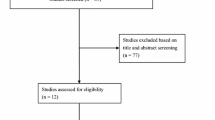Abstract
Objective: To evaluate the economic implications for transplant centres, Medicare and society of treatment of corticosteroid-resistant Banff Grades I, II and III acute kidney transplant rejection with the antithymocyte globulins Thymoglobulin® or Atgam®.
Design and setting: This was a cost analysis of a randomised double-blind multicentre clinical trial comparing the safety and efficacy of Thymoglobulin® and Atgam® that was performed at 25 centres in the US in 1994 to 1996.
Patients and participants: The study enrolled 163 patients, 82 in the Thymoglobulin® arm and 81 in the Atgam® arm.
Methods: Estimates of the cost of care from the initiation of rejection therapy to 90 days post-therapy were derived from various publicly available sources and applied to patient-specific clinical events documented in the clinical trial. Patients received either intravenous Thymoglobulin® (1.5 mg/kg/day) for an average of 10 days or intravenous Atgam® (15 mg/kg/day) for an average of 9.7 days.
Results: On average, Thymoglobulin® provided significant cost savings compared with Atgam® from the perspective of society [$US5977 (1996 values); 95% confidence interval (CI) $US3719 to $US8254], Medicare ($US4967; 95% CI $US3256 to $US6678) and the transplant centre ($US3087; 95% CI $US1512 to $US4667). The overall advantage attributable to Thymoglobulin® was primarily due to savings from fewer recurrent rejection treatments and less frequent return to dialysis.
Conclusions: Treatment of acute renal transplant rejectionwith Thymoglobulin® is a cost saving strategy when compared with treatment with Atgam®.





Similar content being viewed by others
References
Benvenisty AI, Tannenbaum GA, Cohen DJ, et al. Use of antithymocyte globulin and cyclosporine to treat steroid-resistant rejection episodes in renal transplant recipients. Transplant Proc 1987; 19: 1889–91
O’Donaghue DJ, Johnson RW, Mallick NP, et al. Rabbit antithymocyte globulin treatment of steroid resistant rejection in renal allograft recipients immunosuppressed with cyclosporine A. Transplant Proc 1989; 21: 1736–7
Filo RS, Smith EJ, Leapman SB. Reversal of acute cadaveric renal allograft rejection with adjunctive ATG therapy. Transplant Proc 1981; 13: 482–90
Gaber AO, First MR, Tesi RJ, et al. Results of the doubleblinded, randomized, multicenter, phase III clinical trial of Thymoglobulin versus Atgam in the treatment of acute graft rejection episodes following renal transplantation. Transplantation 1998; 66 (1): 29–37
Solez K, Axelsen RA, Benediktsson H, et al. International standardization of criteria for the histologic diagnosis of renal allograft rejection: the Banff working classification of kidney transplant pathology. Kidney Int 1993; 44: 411
Bonk RJ, McGhan WF. Pharmacoeconomic evaluation to assist prescription drug pricing: a US perspective on an international issue. Pharmacoeconomics 1993; 4 (2): 73–6
Reekie WD, Buxton MJ. Cost-effectiveness as a guide to pricing a new pharmaceutical product. S Afr Med J 1994; 84: 421–3
Brennan DC, Schnitzler MA, Baty JD, et al. A pharmacoeconomic comparison of antithymocyte globulin and muromonab CD3 induction therapy in renal transplant recipients. Pharmacoeconomics 1997; 11 (3): 237–45.
Drug topics red book. Montvale (NJ): Medical Economics Company Inc., 1996
United States Renal Data System. The economic cost of ESRD, vascular access procedures, and Medicare spending for alternative modalities of treatment (chapter 10). In: The 1997 annual data report. Ann Arbor (MI): United States Renal Data System, 1998: 143–62
Eggers PW, Kucken LE. Cost issues in transplantation. Surg Clin North Am 1994; 74 (5): 1259–67
Acknowledgements
This study was supported in part by a grant from the SangStat Medical Corporation, Menlo Park, California, USA.
Author information
Authors and Affiliations
Corresponding author
Rights and permissions
About this article
Cite this article
Schnitzler, M.A., Woodward, R.S., Lowell, J.A. et al. Economics of the Antithymocyte Globulins Thymoglobulin® and Atgam® in the Treatment of Acute Renal Transplant Rejection. Pharmacoeconomics 17, 287–293 (2000). https://doi.org/10.2165/00019053-200017030-00006
Published:
Issue Date:
DOI: https://doi.org/10.2165/00019053-200017030-00006




